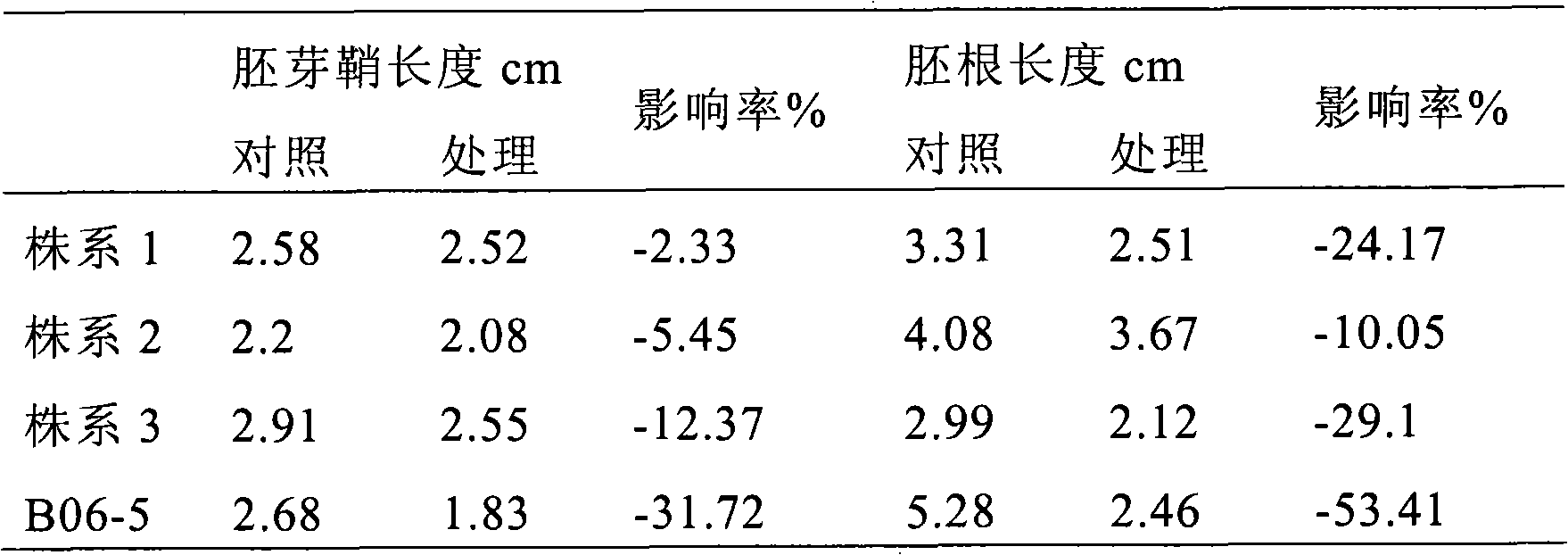Method for screening anti-fusarium graminearum toxin of wheat crops
A technology of rubella and crops, applied in the field of crop genetics and breeding, can solve problems affecting human health, lack of control technology, and low efficiency of high-resistant materials
- Summary
- Abstract
- Description
- Claims
- Application Information
AI Technical Summary
Problems solved by technology
Method used
Image
Examples
Embodiment 1
[0145] Example 1: Gibberella virus-resistant treatment of barley anthers and microspore extraction
[0146] Select middle part floret microspore development to be in the tassel of uninucleate early stage, middle stage from Daejeon, put into refrigerator and refrigerate for 15 days. When inoculating, the tassels are sterilized with saturated bleach solution for 15 minutes, and rinsed with sterile water 3-4 times. 40 anthers were placed in each petri dish, with 1.5×10 -4 After the 0.3M mannitol extract of mol / L rubella toxin is pretreated in the dark for 3 days, pour 15ml of 0.3M mannitol extract into it, and use a high-speed disperser of 3000rpm for ultra-speed rotary cutting, filter with a 150-mesh sieve, and filter the filtrate with 800rpm low-speed centrifugation, repeated 3 times, to collect microspores.
Embodiment 2
[0147] Embodiment 2: the acquisition of gibberellin virus-resistant embryoid body
[0148] Induction medium with N 6 The culture medium is basic medium, which is added with gibberellum crude toxin 0.75×10 -4 mol / L, 2,4,5-T 0.5mg / L, KT 0.5mg / L, maltose 90g / L, pH 5.8. Before culturing, the microspores were washed once with the medium, and then the microspore density was adjusted to 1.0-1.2×10 5 / ml, take 1.5ml of microspore suspension and inoculate it on a petri dish (30×15mm), seal it with Parafilm, and incubate in dark at 25°C for 21 days.
Embodiment 3
[0149] Embodiment 3: Acquisition of regenerated plants resistant to gibberellin virus
[0150] After 21 days of induction culture, the embryoid bodies were transferred to the differentiation medium. The differentiation medium used 2 / 3MS as the basic medium, added NaCl 300mg / L, 6-BA 0.5mg / L, KT 1.5mg / L, NAA 0.05mg / L and maltose 30g / L, and the pH was 5.8. Under the conditions of 25±1° C. and 10-12 hours of light per day, the differentiation stress culture is carried out for 25-30 days until green regenerated plants are differentiated.
PUM
 Login to View More
Login to View More Abstract
Description
Claims
Application Information
 Login to View More
Login to View More - R&D Engineer
- R&D Manager
- IP Professional
- Industry Leading Data Capabilities
- Powerful AI technology
- Patent DNA Extraction
Browse by: Latest US Patents, China's latest patents, Technical Efficacy Thesaurus, Application Domain, Technology Topic, Popular Technical Reports.
© 2024 PatSnap. All rights reserved.Legal|Privacy policy|Modern Slavery Act Transparency Statement|Sitemap|About US| Contact US: help@patsnap.com









